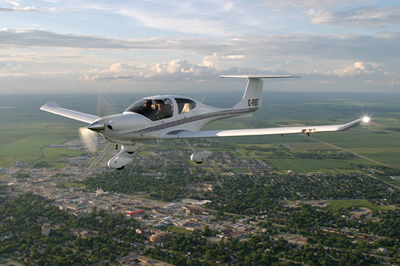
News
A Winning Attitude
In 1972, Steinbach, Manitoba’s Harvey Penner was a trained flight instructor in need of a full-time job
February 4, 2010 By James Careless
In 1972, Steinbach, Manitoba’s Harvey Penner was a trained flight instructor in need of a full-time job. But he had no trouble getting part-time work in his hometown: “People would always ask him things like, ‘Can you help me get my night rating? Can you help me get my flying licence?’” says son Adam Penner. “He found himself helping out so often that he decided to open a school of his own. So my dad bought a Grumman Yankee and opened Harv’s Air Pilot Training. Since we have over 300 good flying days a year, thanks to our weather, Steinbach was a natural location.”
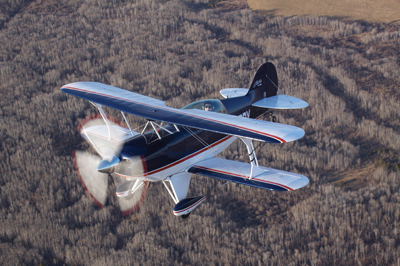 |
Thirty-seven years later, Harv’s Air Pilot Training is a renowned flight school with bases in Steinbach and nearby St. Andrews (outside of Winnipeg). Harvey still works for the company, as do his sons Adam (operations manager), Greg (accountant) and Luke (Class 1 flight instructor). What started with one plane has grown to a fleet of 30, manned by 26 instructors, four AMEs, and 20 or so support staff. Add hangars, offices, classrooms, student residences, and a private airport, and you have a sense of how Harv’s has grown.
A Private Airport?
That’s right, Harv’s Air Pilot Training has its own airport in Steinbach. Family members live nearby in their homes, and Harvey’s kids grew up riding their tricycles on the tarmac. “I’m the only one of the brothers with kids of my own – ages six and eight – and they ride their trikes here just like I used to,” Adam Penner says.
|
The reason Harv’s Air has its own airport is because Harvey Penner built it. It’s not exactly Pearson International: The Steinbach base has a 3,000-foot-long, 100-foot-wide main grass strip – with the middle 30-foot strip paved to reduce wear and tear – and a second 1,900-foot-long cross-wind grass strip. “Grass is no problem to work with; in fact, it is often more forgiving for students to land on,” says Penner. “We also have a GPS approach which we installed a few years ago, which we are very proud of.”
Because this is a private airport, Harv’s Air has complete control of its airspace. There’s no waiting for other planes from other companies to take off and land, nor any need for students to “move out of the way.”
“We can do what we want, when we want and how we want,” Penner says. “Our students do not have to pay landing or terminal fees. The only downside is that, because we own the airport, we have to cut the grass and plow the runway!”
“Steinbach South Airport” is home to the company’s main facility. It contains a main classroom, six briefing rooms, boardroom, common room and Precision Flight Control simulators (Single Elite Flight Training Devices). The site also has a 100- by 100-foot hangar, where Harv’s Air fleet is maintained. The company’s other base is at St. Andrews Airport outside Winnipeg. This facility is owned and operated by the Rural Municipality of St. Andrews, so students do have to wait their turn for takeoffs and landings. However, there are no landing or terminal fees here either, at least not for Harv’s Air students. Like the Steinbach base, Harv’s Air St. Andrews has offices, classrooms, Precision Flight Control simulators (Single and Dual Elite Flight Training Devices; ATC-810 Navajo Simulator), residences and two hangars.
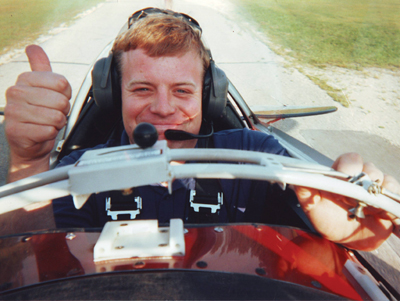 |
|
| Harv’s Air is a family affair – Harvey works alongside his sons Adam (operations manager, pictured here), Greg (accountant) and Luke (Class 1 flight instructor).
|
Between these two locations, the company teaches about 500 students a year. “Half are from Canada, the other half from overseas,” Adam Penner says. “Many stay in our residences, which are either dorm rooms, houses or furnished mobile homes. Others drive to class: Since we are in a rural area, we rent cars to our students.”
Harv’s Air force
The Harv’s Air fleet – which is shared between the Steinbach and St. Andrews bases – is substantial and offers students a broad range of aircraft to learn on. It is made up of a Cessna Diamond Star (equipped with a Garmin G-1000), 15 Cessna 152s, six Cessna 172s, two Citabria 7-ECAs (for aerobatics), a Piper Warrior, a Taylor Craft (for ski training), a Pitts S2B Biplane for aerobatics training, a Twin Beech 95, a Twin Piper Seneca, and a Piper Navajo. Add the fact that Harv’s provides training at all levels of flight – from recreational and private to commercial, night, multi-engine, and aerobatics and flight instruction – and this is truly a well-rounded training experience.
“The 1983-vintage Pitts S2B allows us to provide students with real aerobatics training,” says Adam Penner. “We’re big believers in students knowing how to do more than just standard level flight. The more you know about aerobatic flying, the better you are as an overall pilot. Besides, the Pitts is my father’s ‘toy’; at least that’s what he called it when we bought the Pitts in 1997!” Worth noting: Pete McLeod, the youngest and first Canadian pilot to compete in the 2009 Red Bull Air Race World Championship, got his pilot’s licence at Harv’s Air in Steinbach. “We got him started, but he went way beyond us – quite literally!” says Penner.
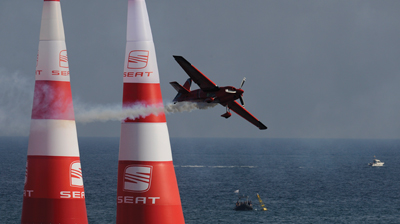 |
|
| Pete McLeod, the youngest and first Canadian pilot to compete in the 2009 Red Bull Air Race World Championship, got his pilot’s licence at Harv’s Air in Steinbach.
|
Online ground school
Mindful of the fact that students can’t always study where and when they want to, Harv’s Air has established an “online ground school.” Located at www.pilottraining.ca, the school provides ground training for private, commercial and instrument pilots. Although these courses have a fee, the site will send you a demo training course for free so that you can see what the program is like. “We want students to be able to do ground school whenever and wherever they can,” Penner says. “We can’t do flight training this way, but at least we can ensure that, when they are with us, our students can focus on flying.”
Harv’s Air makes extensive use of video for both teaching and marketing. Their philosophy is that reading a book only goes so far. With that in mind, Adam and his instructors filmed a number of air exercises from the airplane. “Seeing the exercises taught from several angles in flight helps the student understand what it is supposed to look like. The goal is to better prepare the student for flying to save him cost and time,” Penner notes. The teaching videos are tied together with online learning management software and delivered online. Streaming the video online allows for instant distribution and fast updates.
A commitment to excellence
Harv’s Air Pilot Training takes excellence very, very seriously. This is why Harvey Penner makes no bones in telling prospective students how tough flight school can be. “Flying is different than anything a person has done in the past,” he writes in “Flight Training Standards,” a page posted on www.harvsair.com. “You may be a very intelligent person with a lot of education but this does not guarantee that you have good hands-on skill. You may have good hands-on skill but may have a hard time academically.” He then warns that, “Obtaining a Canadian commercial licence requires that you meet a standard. It is a standard recognized everywhere in the world. It is not a matter of flying a certain number of hours and you will have the licence. You must earn it.” Finally, “If you think reaching the standard was hard work, your evaluation and training with a future employer will be harder,” Harvey Penner concludes.
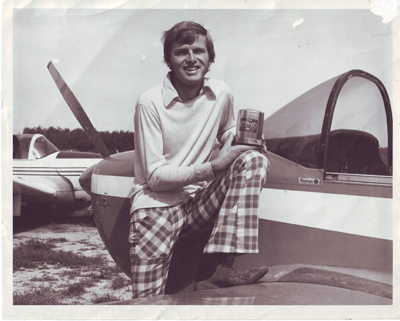 |
|
| Harvey Penner circa 1973.
|
“My dad’s point is not to discourage people from flying, but to let them know what to realistically expect, and what we expect from them,” Adam Penner says. “As a school, we take our role very seriously. We can tell early on if a person has what it takes to be a pilot, and if they don’t, we will ask them, nicely, to withdraw from the course. We’re not one of those places who will keep taking money from students irrespective of their potential. And if people want to go elsewhere and get a second opinion, that’s just fine.” As well, “When a student arrives at our school with many hours logged but no licence, we generally will contact the previous school to find out what has caused this,” writes Harvey Penner in his online posting. “We discuss this information with the student and will agree to fly several evaluation flights. If our findings are the same as from the previous school we will not continue flight training.”
The future of Harv’s Air
For the Penner family, aviation is in its blood. “I was flying sitting on my dad’s lap since I was six months old, as he talked my mother through flight training,” says Adam Penner. “I grew up thinking it was normal to have airplanes in the backyard. My son and daughter think that too.”
Will Adam’s kids become the third generation of Penners to run Harv’s Air? It is too early to tell. But as the second generation of brothers gets more into the business, and as more children are born and grow up, it is hard not to believe that this flight school will have Penners at the helm for years to come. “We all love flying in this family; it is what we do and care about,” Adam Penner says. “Given the growth of the company, and the fact that we get to go to work at our own private airport, what’s not to like about working here? What career could be better?”
